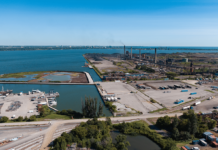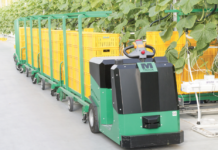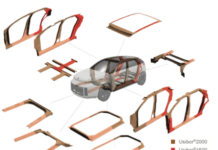From their home in Hamilton, Ontario, ArcelorMittal Dofasco’s team is working with global colleagues to design and develop steels that are transforming the Mdesign, performance and sustainability of autos
More than 5,400 employees company, and is Canada’s largest at ArcelorMittal Dofasco producer of flat rolled, or sheet, steel. make more than 100 grades of steel from the company’s home in Hamilton. These steels are used in the automotive, distribution, construction and manufacturing, consumer and industrial packaging and tubular sectors. Each ArcelorMittal Dofasco steel coil is designed and manufactured to the exacting standards of the company’s customers for its intended end use, with very tight tolerances.
Dofasco is part of ArcelorMittal, the world’s largest steel and mining company, and is Canada’s largest producer of flat rolled, or sheet, steel. The company produces more than 4.5 million tons of steel for customers throughout the NAFTA region. From Tin Plate Steel for food and industrial packaging to Ultra High Strength and Advanced High Strength Steels that form crucial parts for autos, each coil of steel is designed and manufactured to the exacting standards of the company’s customers for its intended end use.A significant amount of the company’s steels are used in the automotive sector, making ArcelorMittal Global Auto Steel Innovation Timeline the company a crucial player in the NAFTA automotive supply chain.
In 1970, there were 7 grades of steel.Today, there are more than 200, with Advanced High Strength Steels being the fastest growing material in a vehicle.“There are hundreds of steel parts on the vehicle and they all do a different job. To get the best performance and best mass reduction, it’s useful to have all these grades,” Paul Schurter, the company’s Global Technology Manager,Automotive Product Applications, says.
Steel continues to reinvent itself, with the development of third generation Advanced High Strength Steels.This class of steel grades combines the strength of Advanced and Ultra High Strength Steels with enhanced formability, further increasing design flexibility. Some of these third generation grades are already being used in today’s cars and trucks.
Steel is also the most sustainable choice.“When we talk about sustainability, it’s more than just fuel economy,” Schurter says.“The current focus of fuel efficiency regulations is on tailpipe emissions, but the production process and disposal of a car or truck can account for a significant portion of overall vehicle life cycle emissions.We need to look at reducing greenhouse gas emissions by evaluating the whole life cycle of the vehicle – production, driving and recycling.”
In North America, steel has four to five times less CO2 emissions than aluminum during the production phase. Steel also offers light-weighting capabilities in the driving phase.When you apply steel to the vehicle, it supports about 25 per cent mass reduction, helping improve fuel economy and reduce greenhouse gasses.
 In terms of recyclability, steel is very easy to separate from other materials in the scrapped vehicle because it is magnetic. Unlike alternative materials, there is an abundant amount of recycled steel – more than 80 million tons per year – available to manufacture new steel products. In addition, steel can be infinitely re-melted into any steel grade without losing strength, while other metals must be sorted by grade for re-melting to achieve the same properties.
In terms of recyclability, steel is very easy to separate from other materials in the scrapped vehicle because it is magnetic. Unlike alternative materials, there is an abundant amount of recycled steel – more than 80 million tons per year – available to manufacture new steel products. In addition, steel can be infinitely re-melted into any steel grade without losing strength, while other metals must be sorted by grade for re-melting to achieve the same properties.
“No other material has improved its fundamental performance characteristics for automotive applications like steel… and we’re not done by a long shot,” Schurter says.

















